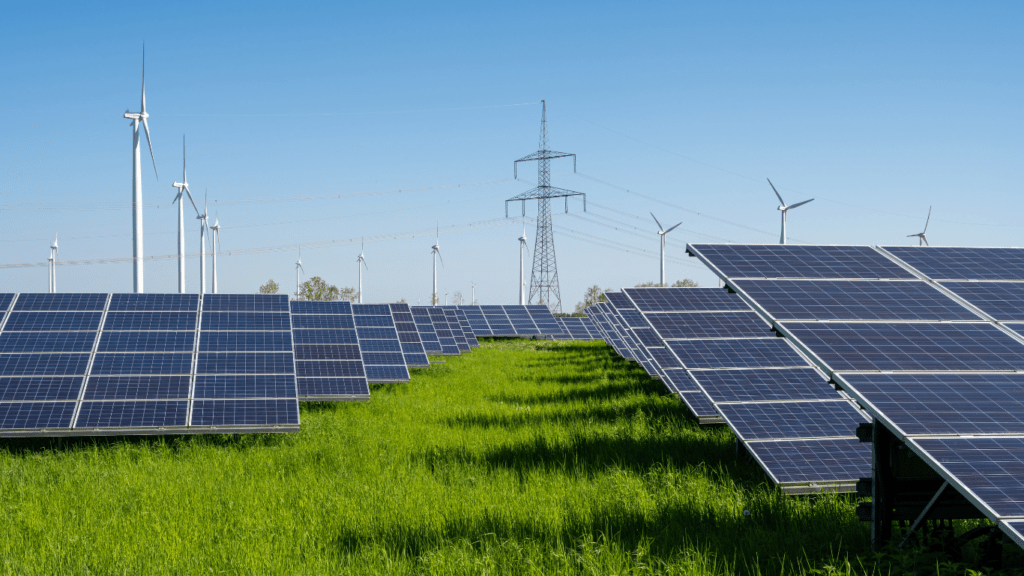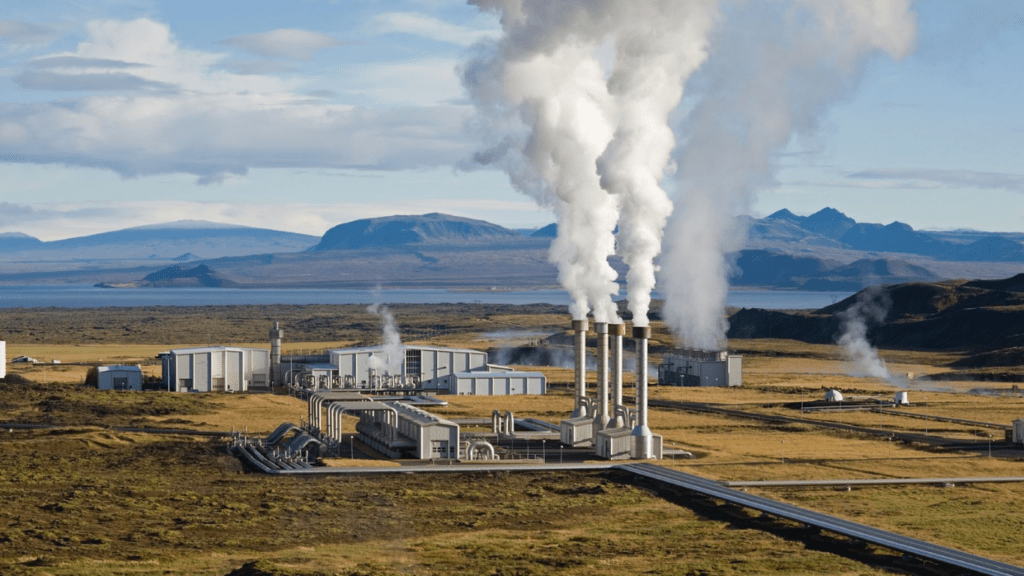Overview of Current Renewable Energy Landscape
The renewable energy sector has seen significant growth, driven by climate change concerns and technological innovations. It reflects a shift towards sustainable and affordable energy sources.
Growth in Renewable Energy Usage
The use of renewable energy sources such as solar, wind, and hydropower has surged in recent years. In 2022, renewables accounted for 28% of global electricity generation according to the International Energy Agency.
Solar capacity, for example, increased by 20%, while wind energy saw an 18% rise in installations. Nations with notable growth include China, the United States, and Germany. These countries implemented policies and subsidies to encourage the adoption of clean energy solutions.
Key Challenges Facing Renewable Energy
Despite its rapid growth, renewable energy faces challenges that hinder its full potential. One major obstacle is energy storage. Renewable sources like solar and wind are intermittent, meaning energy generation isn’t constant.
Effective storage solutions are needed to ensure a reliable power supply. Advances in battery technology and grid infrastructure are essential to address these issues.
Another challenge involves grid integration. Integrating large volumes of renewable energy into existing power grids requires substantial upgrades and investments. Grid stability and efficiency must be maintained to accommodate fluctuations in renewable energy supply.
Additionally, high initial costs pose a barrier. Although renewable energy becomes more cost-effective in the long run, the initial investment remains significant.
This is particularly challenging for developing nations with limited financial resources. Overcoming these challenges is critical for the continued expansion and success of renewable energy worldwide.
Advancements in Solar Energy Technology
Solar energy remains the frontrunner in renewable energy innovations. Recent breakthroughs are significantly enhancing the efficiency and integration of solar technology.
Innovations in Solar Panel Efficiency
Advancements in photovoltaic (PV) materials have boosted panel efficiency. Monocrystalline panels, for instance, now achieve over 20% efficiency under standard test conditions, compared to 15-17% a decade ago.
Perovskite solar cells are another notable development, offering efficiencies above 25% while being cheaper to produce. Tandem solar cells combine different types of PV materials, pushing efficiency towards 30%.
Enhanced light-absorbing coatings and novel cell architectures also contribute to higher energy output from the same physical footprint. In total, these innovations help reduce the cost per watt, making solar energy more competitive.
Building-Integrated Photovoltaics (BIPV)
BIPV technology integrates solar panels directly into building materials. Solar roof tiles, for example, replace traditional roofing, providing electricity without compromising aesthetics.
In the commercial sector, semi-transparent solar windows offer energy generation while maintaining visibility and natural light. Façade-integrated PV systems transform skyscrapers into vertical power plants, using otherwise idle surfaces.
BIPV reduces installation costs by combining solar installation with building construction or renovation. Additionally, it aligns with green building practices and urban sustainability initiatives, promoting wider adoption of solar energy in densely populated areas.
Developments in Wind Energy
Wind energy has seen substantial growth due to its potential for large-scale electricity generation. This section focuses on the latest trends, especially in offshore wind farms and turbine technology.
Offshore Wind Farms
Offshore wind farms have gained prominence in the renewable energy sector for their ability to harness stronger, more consistent winds. In 2022, global offshore wind capacity reached 57 GW, driven by projects in countries like:
- UK
- China
- Germany.
Floating wind turbines allow installations in deeper waters, expanding the geographical scope of wind energy. One example is the Hywind Scotland project, which demonstrated the viability of floating turbines at scale.
Advancements in Turbine Technology
Turbine technology has evolved rapidly, leading to higher efficiency and greater power output. Modern turbines have grown in size, with rotor diameters now exceeding 150 meters.
These large turbines generate more electricity per unit, reducing overall costs. Innovations like blade materials, such as carbon fiber composites, enhance durability and performance.
Additionally, predictive maintenance systems using AI and IoT improve turbine reliability by forecasting potential issues before they occur.
The Rise of Bioenergy and Geothermal Solutions

Bioenergy and geothermal advancements show significant promise in diversifying our renewable energy portfolio.
Breakthroughs in Bioenergy Production
Bioenergy derives from organic materials like plant waste, animal residues, and agricultural by-products. Technological advances are improving conversion efficiency.
Anaerobic digestion, a process where microorganisms break down organic matter without oxygen, is gaining traction. For instance, in Germany, biogas plants produced over 35 TWh of electricity in 2022, powering millions of homes.
Bioenergy systems now use a range of feedstocks. Algae, for example, converts sunlight into biofuels and captures CO2, providing dual benefits.
Additionally, second-generation biofuels, such as cellulosic ethanol made from non-food crops, lessen competition with food resources. Pilot projects, like the one in Iowa producing 30 million gallons annually, demonstrate practical viability.
Geothermal Energy Expansion
Geothermal energy harnesses heat from beneath the Earth’s surface. Enhanced Geothermal Systems (EGS) tap deeper geothermal resources, boosting capacity and efficiency.
Annually, this sector grows by around 4%, driven by countries like Iceland and the Philippines.
Geothermal heat pumps (GHPs) offer a sustainable heating and cooling solution for buildings. By 2022, GHP installations in the US exceeded two million units.
These systems reduce electricity consumption by up to 60%, decreasing both costs and carbon footprint.
Enhanced drilling techniques and improved turbine designs increase geothermal power plant output.
The Nesjavellir Geothermal Plant in Iceland produces 120 MW of electricity and 1,100 GWh of hot water, showcasing large-scale potential.
Integration of Renewable Energy into Existing Grids
Integrating renewable energy into existing grids is crucial for maximizing green technology’s benefits and addressing reliability concerns. This section explores smart grid technologies and energy storage solutions essential for a sustainable future.
Smart Grid Technologies
Smart grid technologies facilitate the integration of renewable sources. These technologies use digital communications to detect and react to local changes.
For example, they help balance electricity supply from solar panels and wind turbines with fluctuating demand.
Advanced metering infrastructure (AMI) plays a significant role. AMI includes smart meters that provide real-time data on energy consumption. This data helps utilities manage energy distribution more efficiently.
Demand response systems are another key component. They adjust consumer power usage based on supply conditions. If energy demand peaks, these systems reduce non-essential consumption, ensuring grid stability.
Energy Storage Solutions
- Energy storage solutions are vital for dealing with renewable energy’s intermittent nature.
- Batteries, like lithium-ion, store excess energy generated during peak production times and release it when production is low.
- Pumped hydro storage is another effective solution. It uses surplus energy to pump water uphill into a reservoir. When energy demand is high, the water flows back down, generating electricity via turbines.
- Emerging technologies include hydrogen storage. It involves producing hydrogen through electrolysis during excess renewable energy production. Stored hydrogen can then be converted back to electricity or used in fuel cells.
- By integrating these smart grid technologies and energy storage solutions, the potential for renewable energy can be maximized, ensuring a reliable and efficient energy supply.
Policy and Regulatory Changes Impacting Renewable Energy
Governments and international bodies are enacting key policy and regulatory changes, driving the rapid adoption of renewable energy technologies.
Incentives and Subsidies for Renewable Energy Projects
Incentives and subsidies have played a pivotal role in expanding renewable energy. Governments offer tax credits, grants, and feed-in tariffs to make projects more financially viable.
The U.S. offers the Investment Tax Credit (ITC), reducing the tax burden on solar energy investments.
Germany’s Renewable Energy Sources Act (EEG) provides feed-in tariffs, ensuring fixed payments for renewable electricity fed into the grid, promoting investor confidence.
Context-specific subheadings keep focus on critical policy impacts. For example, subsidies for offshore wind projects in the UK have led to significant growth, with offshore capacity surpassing 10 GW by 2022.
Emerging markets, like India, are also ramping up incentives for solar projects, aiming to reach 100 GW of solar capacity by 2030.
International Agreements and Protocols
International agreements set ambitious targets for renewable energy deployment. The Paris Agreement, adopted by 196 countries, aims to limit global warming by transitioning to low-carbon energy sources.
The agreement includes commitments to increase renewable energy capacity in both developed and developing nations.
The European Union’s Renewable Energy Directive requires member states to ensure that at least 32% of energy consumption comes from renewable sources by 2030.
Each member state must create a National Energy and Climate Plan (NECP) detailing how they’ll meet these targets, promoting accountability and progress.
In Asia, the ASEAN Plan of Action for Energy Cooperation (APAEC) 2016-2025 outlines targets for increasing renewable energy share in the region’s energy mix to 23% by 2025. This collaborative effort ensures cohesive regional development, sharing best practices and resources.
Policy and regulatory changes under these headings drive substantial growth and integration of renewable energy, ensuring a sustainable future.



